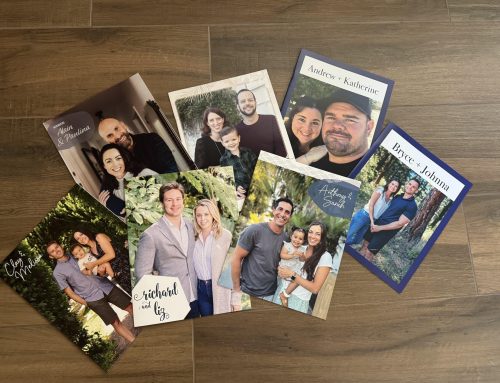
Ashley is a momma to her virtual twins, daughter’s Eden and Shiloh. As a former Purl family, previous blog contributor and mental health therapist, Ashley loves sharing what she has learned about children and the adjustment of adding siblings to the family. Though most days she is a stay-at-home momma, she contributes at Ataraxis Counseling LLC, where she supports women and mothers as a mental health counselor. You can follow along at Ataraxis_Counseling on IG, or at ataraxiscounseling.com.
—-
There is rarely something more anticipated than watching your child respond to their newest little brother or sister. Will they be excited? Will they struggle to communicate feelings of sadness or jealousy? Surely every child responds to becoming an older sibling a little differently: and there are various seasons of adjustment for the child. At first the child may be wary of the new baby, feeling anxious when the baby cries or has constant needs that overlap the older child’s time with mom and dad. With time, consistency and with the younger child’s development, the older sibling’s feelings can decrease in their intensity and when the baby finally offers a first smile at him or her, many of us watch our older children fall in love. Inversely, the older child may be positively charmed at first sight, but with weeks that ware on, reality hits him and halts the lovey-dovey exchanges. Regardless of how those first few months go, there is nothing like siblings developing a life-long bond, no matter how our children come to us. Depending on our children’s ages when they become big brothers or sisters, there are many things parents can do to help with the transition. No matter the child’s age, devoting time and conversations with our children to help them prepare for a new sibling is vital.
My Irish Twins (Older siblings less than a year old)
My daughter was only ten months old when we brought her sister home from the hospital. I had imagined opening the car door to her grinning face as she lovingly doted on her new doll-like sister. My expectations were shattered within two seconds of them meeting one another. I had my husband video-tapping Eden’s response, naively prepared for the next viral video of two siblings in love at first sight. Instead, Eden burst into tears at seeing me hold another baby, and crawled over to me howling. Tanner quickly snapped off the recording device and swooped Shiloh out of my arms before Eden clawed her out of my grip instead. Now, I know my story isn’t necessarily common, most people don’t choose to add more kiddos until the youngest is older than ten months. But something we have tried to commit to from the start was ensuring we had one on one time with parents, devoting attention to one baby at a time. In the early mornings, Tanner would wake up with Eden and would take her to have breakfast and play for an hour or more while I stayed in bed with our new baby. It was nice that Eden did not have to share her dad’s attention, and that I could devote eye-contact and physical touch to our newest member. We continue to strive for one on one time with each daughter throughout the week, sometimes even rotating nap schedules so that I can devote personal time with each daughter. This has helped Eden immensely with the transition.
2-4 Years Older
Many toddler’s vocabularies and understanding of what is going on around them starts booming as they age. One Purl family shares with us that reading and sharing books on becoming a big sibling worked well to prepare their child for a new addition. Many child psychologists believe it is never too early to introduce books to your children about content you want children to absorb or begin processing. Books often give child-appropriate language to describe difficult feelings in order to prompt more communication between parents and kids. Many books spend significant time reassuring children of their special place of love and belonging in the family, regardless of who joins. Picture books help younger children understand more about what a baby needs and how to cope with the unfamiliar noises of a newborn. Another family shares that they gave their toddler a baby doll around the time they were adding their son. The older son could practice bathing, swaddling and bottle feeding the baby when the parents cared for the newborn. They share that it made their son feel included and like his efforts to help take care of his doll were reflective of love for his new brother. Here are some recommended books about bringing a sibling home:

Ashley is a momma to her virtual twins, daughter’s Eden and Shiloh. As a former Purl family, previous blog contributor and mental health therapist, Ashley loves sharing what she has learned about children and the adjustment of adding siblings to the family. Though most days she is a stay-at-home momma, she contributes at Ataraxis Counseling LLC, where she supports women and mothers as a mental health counselor. You can follow along at Ataraxis_Counseling on IG, or at ataraxiscounseling.com.
—-
There is rarely something more anticipated than watching your child respond to their newest little brother or sister. Will they be excited? Will they struggle to communicate feelings of sadness or jealousy? Surely every child responds to becoming an older sibling a little differently: and there are various seasons of adjustment for the child. At first the child may be wary of the new baby, feeling anxious when the baby cries or has constant needs that overlap the older child’s time with mom and dad. With time, consistency and with the younger child’s development, the older sibling’s feelings can decrease in their intensity and when the baby finally offers a first smile at him or her, many of us watch our older children fall in love. Inversely, the older child may be positively charmed at first sight, but with weeks that ware on, reality hits him and halts the lovey-dovey exchanges. Regardless of how those first few months go, there is nothing like siblings developing a life-long bond, no matter how our children come to us. Depending on our children’s ages when they become big brothers or sisters, there are many things parents can do to help with the transition. No matter the child’s age, devoting time and conversations with our children to help them prepare for a new sibling is vital.
My Irish Twins (Older siblings less than a year old)
My daughter was only ten months old when we brought her sister home from the hospital. I had imagined opening the car door to her grinning face as she lovingly doted on her new doll-like sister. My expectations were shattered within two seconds of them meeting one another. I had my husband video-tapping Eden’s response, naively prepared for the next viral video of two siblings in love at first sight. Instead, Eden burst into tears at seeing me hold another baby, and crawled over to me howling. Tanner quickly snapped off the recording device and swooped Shiloh out of my arms before Eden clawed her out of my grip instead. Now, I know my story isn’t necessarily common, most people don’t choose to add more kiddos until the youngest is older than ten months. But something we have tried to commit to from the start was ensuring we had one on one time with parents, devoting attention to one baby at a time. In the early mornings, Tanner would wake up with Eden and would take her to have breakfast and play for an hour or more while I stayed in bed with our new baby. It was nice that Eden did not have to share her dad’s attention, and that I could devote eye-contact and physical touch to our newest member. We continue to strive for one on one time with each daughter throughout the week, sometimes even rotating nap schedules so that I can devote personal time with each daughter. This has helped Eden immensely with the transition.
2-4 Years Older
Many toddler’s vocabularies and understanding of what is going on around them starts booming as they age. One Purl family shares with us that reading and sharing books on becoming a big sibling worked well to prepare their child for a new addition. Many child psychologists believe it is never too early to introduce books to your children about content you want children to absorb or begin processing. Books often give child-appropriate language to describe difficult feelings in order to prompt more communication between parents and kids. Many books spend significant time reassuring children of their special place of love and belonging in the family, regardless of who joins. Picture books help younger children understand more about what a baby needs and how to cope with the unfamiliar noises of a newborn. Another family shares that they gave their toddler a baby doll around the time they were adding their son. The older son could practice bathing, swaddling and bottle feeding the baby when the parents cared for the newborn. They share that it made their son feel included and like his efforts to help take care of his doll were reflective of love for his new brother. Here are some recommended books about bringing a sibling home:





